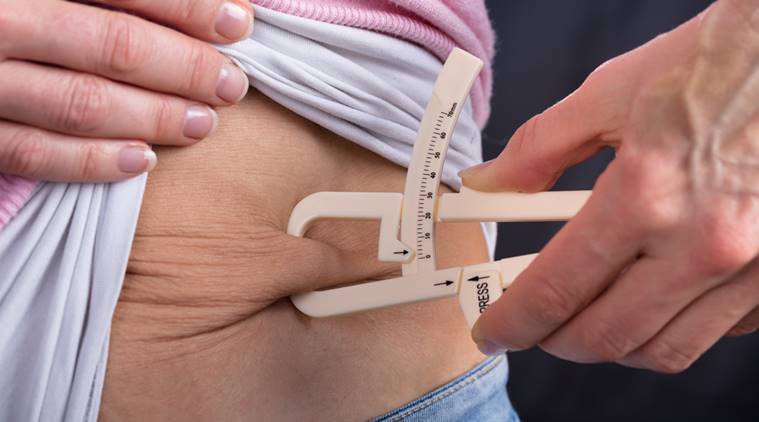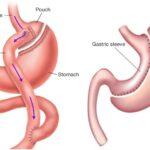What is the goal of bariatric surgery?
Bariatric surgery is currently the best treatment for obesity and its associated diseases such as hypertension, diabetes, obstructive sleep apnea or increased blood lipids. It is undoubtedly the best option for those patients who suffer from obesity and have spent years fighting the scale based on diets and slaves of nutritional plans with frustrating results that after multiple failures of these diets need additional help.
For whom is this surgery indicated?
It is indicated in those patients with obesity based on defined parameters. The indication must be based both on excess fat and on the pathologies or health problems that the patient presents. It is also indicated in patients with limitations due to joint or spinal problems since they cannot exercise, which makes it very difficult to succeed only by dieting. In general and simplifying a lot, we could say that those patients with a body mass index greater than 35 or greater than 30 with associated diseases would have an indication for bariatric surgery. The choice of the bariatric surgery technique that each patient will need will require an individualized assessment of each case, and in my opinion, Therein lies to a large extent the success of the results of the technique carried out not only in the short term but especially in the medium-long term so that after the years the patient does not regain weight and find himself in the same situation again. To make a correct indication of the bariatric surgery technique, it is essential to put yourself in the hands of surgeons specialized in bariatric surgery with great experience in this pathology and who master all the laparoscopic techniques that we have to treat it.
What techniques or procedures can be carried out?
We have many different techniques for the treatment of obesity, and we cannot differentiate between better and worse techniques, it all depends on the characteristics of each patient. All techniques will have fabulous results as long as they are well indicated, failure of the technique is usually due to a poor indication.
Most of the procedures we perform are highly standardized. The surgical treatment par excellence to treat obesity would be the Laparoscopic Gastric Bypass with excellent results in the short and long term that is based on the reduction of the stomach’s capacity associating a jump in the small intestine so that less food is absorbed. With this, what we achieve is to reduce the absorption of carbohydrates and some fats, in addition to reducing appetite by achieving early satiety. The Gastric Bypass is also the only technique that manages to improve the control of diseases such as diabetes or high blood pressure among others, even in many cases it manages to cure these pathologies.
Another highly performed technique is the Vertical Gastrectomy or Gastric Sleeve which is a purely restrictive technique that also has magnificent results,
How are these procedures performed?
All these surgeries, whether vertical gastrectomy or gastric sleeve, gastric band or gastric bypass, are performed under general anesthesia and by laparoscopy, that is, we make several incisions in the abdomen of less than 1 centimeter and through them it is performed The technique. Even those patients with other previous surgeries such as caesarean sections or hernias can be operated on without having to open the abdomen. They are minimally invasive procedures that will allow the patient to return to their daily activities in a few days after being admitted to the hospital for 24 to 48 hours.
How do we know if we can undergo this type of procedure?
For a patient to be able to undergo any of these procedures, it is essential to go to a specialist who will study their case in a comprehensive way and inform them in depth about their problem and what treatment options they have. In general, we could summarize that those with obesity and a body mass index greater than 35 would have an indication for this type of surgery. Also, those patients with a body mass index greater than 30 with associated diseases or health problems in which obesity interferes with the control of the disease, could have an indication for bariatric surgery. It is important that the assessment of the technique to be performed on the patient is indicated by an experienced bariatric surgeon dedicated to this pathology and specialized in its comprehensive management to avoid postoperative complications or therapeutic failures. Keep in mind that not all techniques are suitable for all patients.
What are the results sought after these surgeries?
Fundamentally we are going to seek to reduce body fat to healthy limits and make the problems associated with being overweight disappear. Most patients return to normality with a high degree of satisfaction, in addition to improving their self-esteem and their social relationships. Ultimately it is starting a new life. Most of the excess weight is lost in the 6 – 9 months after surgery. At that time is where more “kilos” are going to be lost. Many patients want to know an approximate weight and even others are concerned about losing excessively. Everything is more predictable if the recommendations of the specialist are followed 100%.
What is the surgery really like, how would it be a normal process to undergo a gastric bypass and its subsequent recovery?
The first step would be an in-office assessment of the patient to study his case in depth and evaluate the treatment options and the most favorable bariatric surgery technique for the patient. After the complete study and once gastric bypass surgery has been indicated, the pre-anesthetic study is performed and the patient is prescribed a hypocaloric hyperprotein diet in preparation for the surgery. With this diet we will be able to reduce visceral fat and liver steatosis. Usually, the patient will enter the morning of surgery and the surgical procedure lasts between 50 minutes and 2 hours depending on the characteristics of the patient, without the need in most cases of admission to the intensive care unit, the patient will remain in the recovery area between 2 and 3 hours.
The postoperative period is usually very comfortable since the patient will not need a urinary catheter or drainage, they will only have a peripheral line in the arm through which we will guide intravenous analgesia for the first 24 hours. In addition, 6 hours after surgery, fluid tolerance will begin and you will be able to get up. In the gastric bypass of an anastomosis or BAGUA, this type of recovery is even faster, so many patients get up and walk between 4-6 hours after the intervention.
During admission, the patient is fed skimmed dairy products, defatted broth and infusions. The patient will go on a transition diet that will go from clear liquids through vegetable purees and creams to a solid diet in no more than three weeks. During the first days the patient eats protein shakes, broths and skimmed milk, then stews and vegetable creams are incorporated and he goes through foods that are easy to chew and digest until he is incorporated into a normal diet.
When can a patient lead a normal life or go to work?
All patients must lead an effortless normal life when they go home. It is recommended to take daily walks and not remain sitting or in bed for hours, so the patient begins by taking 20-minute walks the day after discharge until these walks are extended to 30-40 minutes a week after surgery.
Most patients go to work within a week or two. It is not recommended to start demanding tasks before three weeks, but for an office job the patient could be sitting at his workplace 7 days after the intervention. If the work is physical or very strenuous, it should last at least three weeks.
How important are diet and exercise after obesity surgery?
After gastric reduction surgery, the new stomach determines that meals should be simple, low in volume and low in calories. The first phase after bariatric surgery consists of the administration of clear liquids (defatted broths, diluted juices and infusions) for two or three days, then moving on to a shredded diet at 10 days and should be including foods of a very soft consistency and with high protein content such as eggs, low-fat cheeses, chicken or white fish. Some vegetables, legumes and whole grains, due to their high fiber content, have special difficulty passing through the stomach to the intestine. During this period, fiber from some foods, not being digested, it could clog the stomach outlet if not chewed properly causing a feeling of fullness and heaviness. On the other hand, the consumption of soluble fiber more abundant in fruits, is usually better tolerated, being very interesting for its probiotic activity in the colon, which helps the proper functioning of the bacterial flora.
As for physical exercise, it is recommended from a month and a half after surgery and 6 months. The patient must lead an active life and not “overload” since an injury in the first months would be fatal. Starting 6-8 months after surgery, more demanding exercises could be incorporated. All this will of course depend on the age, physical condition and starting weight of the patient.
Why have this type of surgery?
In most cases, bariatric surgery is not the easiest solution, but the only opportunity for these people to lead a normal and healthy life. The patients who come to my office have spent their entire lives on diets of all kinds with no success. In addition, obesity favors the appearance of other pathologies such as diabetes or traumatic problems of the hips or knees, which notably reduces their quality and life expectancy.
It is necessary to remind patients that obesity is a complex and multifactorial disease, but that by taking care of all the related aspects and following our guidelines, the path they will have to travel will be much easier.




GIPHY App Key not set. Please check settings